Thursday, March 19, 2009
asfsff
Vào khoảng 2h -->4h sáng ngày 20-03-09 Hồ Ly giáo đã bị cạy cửa. mất 1 Laptop Asus, 2 điện thoại, tiền .....! Tổng trị giá khoảng gần 20 triệu!
Vấn đề ở đây là: Do diễn đàn đang chuẩn bị hàng cho hội chợ khoa kinh tế, đây la 1 cơ hội cũng là thách thức! Hàng được gửi từ HN vào, do phải đến tầm time đó hàng mới đến Quy Nhơn, nên mọi người vội lấy hàng mà khóa cửa khong kỹ, nên đã bị cạy cửa vào!
* SVQN Forums là 1 diễn đàn do các sinh viên yêu quý trường lập nên, tuy chưa phát triển mạnh, nhưng cũng đã có lượng member khá đông! Chúng ta đã sống như 1 gia đình, có nhiều niềm vui, có nhiều nỗi buồn, nhưng chúng ta vẫn sát bên nhau!
Cuộc sống vốn dĩ không bằng phẳng, con người cần nhau lúc hoạn nạn, Tuy Hồ Ly giáo không nói gì, nhưng Smile kêu gọi cả nhà cùng chung tay giúp sức Hồ Ly vượt qua gaia đoạn này!
Các bạn có thể
Tuesday, March 10, 2009
Safari 4 a big step up, but not as far as rivals
With Safari 3, I admired Apple's chutzpah for bringing its browser to Windows. With the new Safari 4 beta, I'm actually starting to admire the browser, too.
A big user interface overhaul makes Safari look polished rather than clunky on Windows, builds in better search abilities, and makes good use of the fact that people often visit the same sites over and over.
However, the lack of something like the extensions architecture that Firefox pioneered still means Safari 4 (download for Windows and Mac OS X) is better only than Safari 3, not the competition.
The new software puts Safari 3's brushed-metal appearance on the scrap heap and bolts on a Windows-native appearance. I'm not one of those user interface conformists, but I found the brushed metal interface downright ugly on Windows, in part because of the blotchy font rendering.
Safari 4, though, generally looks slick. And I like its user interface, too, which through what appears to be a case of convergent evolution shares a lot with Google Chrome and some of Firefox's as well.
There's plenty of other new material, though, and Safari's snappy performance makes it a viable contender in the browser wars. Competition really is making the browser better, which is of immense importance as the computing industry moves to a cloud-computing future where applications run on the Web as well as on personal computers.
It's still curious that Apple thinks it's worthwhile to bring Safari to Windows. The company's high-end software, such as Aperture and Final Cut Pro, work only on Mac OS X. Very mainstream software such as iTunes and QuickTime work on Windows, too. iPhoto and other iLife programs in an intermediate realm only work on Mac OS X, though, indicating that Apple has limited appetite for the hassles of supporting a rival operating system.
I suspect that Apple concluded Safari for Windows could help the company tout its wares, possibly convincing Windows users that Apple has some software skills. And perhaps it's laying the groundwork for tighter integration with other Apple software, hardware, and Web services.
For a beta, the software is workable; I encountered one crash in a couple of hours' use.
User interface improvements
Like Chrome, Safari 4 puts all its tabs across the top of the screen, with no traditional title bar, with the address bar below and a row of bookmarks below that. Even the upper-right mini-menus are similar, with small icons for window management and tools. Also like Chrome, when a new tab or page is opened, Safari 4 will by default show an array of most frequently visited sites, a feature Apple calls Top Sites.

Pages in the Top Sites view can be moved, pinned, and deleted.
(Credit: screenshot by Stephen Shankland/CNET Networks)Those differences compared to regular browsers are subtle, but I got used to them in Chrome and concluded I like them. Safari has some differences, though.
For one thing, I'm a keyboard shortcut user, and Safari grants me access to its menu items by hitting the Alt key, which is standard Windows protocol but which is missing from Chrome. For another, Top Sites is much more sophisticated, not just because it has a fancy 3D view, but because you can choose how many mini-pages to show, move them around, "pin" the ones you like to a fixed position, and delete ones you don't want showing.
I like showing tabs at the top, which I think devotes proper prominence to the multiple browser views. But I have nits: the font is too dim, making it hard to see the tab text, and I don't care for how the tabs sprawl to claim as much real estate as possible, because for me it makes them actually harder to recognize as tabs. Perhaps I'll get used to that in time.
Happily, middle-clicking on a link opens the Web page in a new tab now rather than a new browser window, something that bugged me with Safari 3.
But Safari doesn't do something deeper with tabs that Google did with Chrome, isolate each into its own separate computing process. That isolation improves security and stability, though you pay a price in memory. Once Chrome offered it, I got annoyed when a problem that could have brought down a single misbehaving tab brought down my entire browser. More eye candy
Another example besides Top Sites of Apple's polished user interface is the Cover Flow interface to browser history. I'm not a big user of history, so this looks cosmetic more than useful to me, but if you are going to use it, perhaps the visual images will help you find what you need more rapidly than scanning a list of text. A text search box also helps retrieve information.
More helpful by far is the Smart Address Field, which like Firefox 3's Awesome Bar suggests Web addresses from your history and bookmarks when you start typing. It's a much more effective way of returning to earlier sites than scrolling through text history lists.

Safari 4 gets a Cover Flow interface for looking at browser history. (Click to enlarge.)
(Credit: screenshot by Stephen Shankland/CNET Networks)Given Apple's user interface chops, it's interesting the company didn't go as far as Chrome by integrating Web search in the address field. Instead, Safari still has a separate search field to the right of the address bar. Now, though, it's got what Apple calls the Smart Search Field, which is a fancy brand name for using Google Suggest to show possible options when you start typing. Google, Yahoo, and Microsoft all like this feature on their search engines, and I like it this way too: it can save you a few keystrokes, and sometimes it can even help you find material when you don't know exactly how to spell it.

Smart Search Assist uses Google Suggest to streamline search.
(Credit: screenshot by Stephen Shankland/CNET Networks)Like rival browsers, Safari now can magnify or shrink the entire Web page--graphics and text--which is nice for those sites with microscopic type or for when you're showing a site to somebody farther away or dealing with a computer with super-tiny pixels. (Of course, such zooming also can reveal how inflexibly designed a Web page is.)
Skin deep?
User interface improvements aren't just superficial changes. People care about appearance, and making things faster and better adapted to actual humans is important. Kudos to Apple for making Safari look and often work better.
On a deeper level, it's good that the Safari 4 beta also offers better performance. Apple makes a variety of boasts with page-loading speed and, by virtue of its new Nitro engine previously known as Webkit's Squirrelfish, faster JavaScript execution. I can confirm the SunSpider JavaScript speed test runs in less than two thirds the time as on Safari 3, a big improvement, and performance likely will increase more once the final version is released. Check back for more coverage today on detailed performance results.
However, while the user interface improvements overall catch Safari up to the competition and in some cases surpass it, the fact that extensions are missing is an egregious oversight given how powerful Mozilla has shown them to be with Firefox. Not only do they improve the user experience and enable many new features, but they're an excellent way to attract developers and users to your browser. Unsupported options such as PimpMySafari aren't likely to match a real add-on ability.
Chrysler's new technology for 2009
Next up we have in-vehicle wireless internet connectivity, which Chrysler promises will turn your Pentastar-branded car into a mobile hot spot. It will use a combination of WiFi and 4G broadband connectivity to keep your car connected to the internets, and Chrysler says you'll be able to access your email, as well as download music movies right in your car. For the 2008 model year, MOPAR is already offering an aftermarket device that can make your car an internet hot-spot as well, but we're more interested in the integrated system Chrysler's planning for 2009.
Follow the jump for more and Chrysler's official press release.
[Source: Chrysler]

The rest of Chrysler's technology innovations include the ability to swivel the third-row roof-mounted LCD screen in its minivans that are equipped with Swivel 'n Go so that second-row passengers that are turned around have something to watch. The automaker also announced a new back-up warning system called Rear Cross Path and a Blind Spot Monitoring system, as well as telling us again about the combination of its Active Transfer Case and Front-axle Disconnect on the '09 Chrysler 300 and Dodge Charger. The latter bit of hardware allows the all-wheel-drive versions of these big sedans to completely disengage the front axle and operate as a true rear-wheel-drive car, which saves about 1 mpg since there's no parasitic drivetrain loss from the AWD system.
PRESS RELEASE
Chrysler LLC Announces Barrage of New Engineering and Technology Innovations
Available on 2009 Chrysler, Jeep® and Dodge models
- Customer benefits: improved fuel economy, performance, flexibility and convenience
- In-vehicle wireless Internet connectivity: coming from Mopar® by year end
- Rear Cross Path: Chrysler-exclusive system warns drivers of approaching traffic in the parking lot aisle during back-up maneuvers
- Blind Spot Monitoring: exclusive to Chrysler and Dodge in minivan segment
- Active transfer case combined with front-axle disconnect: independent technologies offered together only by Chrysler
- Rear-seat swivel scree: yet another Chrysler exclusive
- Enhanced voice-activated in-vehicle communications system
- Knowledge Based Engineering: vastly improves vehicle development time
Auburn Hills, Mich., Apr 14, 2008 - Chrysler LLC will introduce a wide array of new, innovative and - in most cases - industry-first technologies, all designed to enhance the customer experience, the company announced here today at the Society of Automotive Engineers (SAE) World Congress.
"Chrysler has always been known as an engineering company, and the announcement of these features coming to our lineup in 2009 further drives that point home," said Frank Klegon, Executive Vice President – Product Development, Chrysler LLC. "In today's market, Chrysler's mission is to bring innovation to market more quickly, ultimately resulting in more customer satisfaction and convenience. Each of these unique Chrysler technologies delivers on that mission."
Included in the new technologies are an in-vehicle wireless Internet connectivity system, Rear Cross Path and Blind Spot Monitoring systems, a uniquely combined active transfer case and front-axle disconnect system, and a host of in-vehicle connectivity and entertainment systems that offer added customer benefit and convenience.
In-vehicle wireless Internet connectivity
Chrysler is diligently working on an advanced, in-vehicle wireless system to provide increased security and convenience far beyond anything available today. The system will provide high-speed data transfer and convenience, combining WiFi and 4G connectivity for a new level of wireless technology.
This system will transform the vehicle into a "hot spot" to deliver Internet and e-mail access, and movie and music download capability directly to the vehicle.
While Chrysler will offer this technology in future model-year vehicles, an aftermarket in-vehicle "hot-spot" wireless Internet capability is planned through Mopar® in 2008.
Rear Cross Path
An industry exclusive, Chrysler's Rear Cross Path system warns drivers who are backing out of parking spaces of traffic moving toward their vehicle, but outside the driver's field of vision. Drivers are notified of vehicle(s) crossing behind their vehicle via an illuminated icon on the sideview mirror, and with an audible chime. Rear Cross Path operates any time the vehicle is in Reverse.
Rear Cross Path will be available on the 2009 Chrysler Town & Country and Dodge Grand Caravan.
Blind Spot Monitoring
Chrysler's Blind Spot Monitoring system aids drivers when changing lanes if being passed by vehicles or when vehicles are positioned in the blind spot zone. Drivers are notified of a potential hazard via an illuminated icon on the sideview mirror, and if the turn signal is operated, an audible chime can act as an additional warning. Blind Spot Monitoring – which uses dual ultra-wideband radar sensors – is active any time the vehicle is moving forward.
Blind Spot Monitoring will be available on the 2009 Chrysler Town & Country and Dodge Grand Caravan. No other minivan on the market offers this technology.
Active Transfer Case and Front-axle Disconnect
No other major manufacturer offers these two independent technologies together. In doing so, Chrysler's unique system seamlessly transitions between rear-wheel drive and all-wheel drive with no driver intervention. When all-wheel-drive is not required, the system automatically disconnects the front axle and opens the transfer case from the drivetrain to reduce friction and rotational mass. The system provides optimal traction, performance, safety and an improvement in fuel economy of one mile per gallon.
Chrysler's combined active transfer case and front-axle disconnect system will be available on the 2009 Chrysler 300 and Dodge Charger.
Rear-seat Swivel Screen
Already featuring the industry's most capable and sophisticated rear-seat entertainment system, Chrysler enhances its system for 2009 with an exclusive swivel third-row screen to allow passengers facing to the rear of the vehicle, via Chrysler's Swivel 'n Go™ seating system, to view the screen.
Chrysler's Vehicle Entertainment System includes dual DVD players and screens that deliver a variety of programming choices, with ports to connect games and portable media players. The driver and front-seat passenger have the ability to access all video sources on the front-passenger screen.
Chrysler continues to offer exclusive SIRIUS Backseat TV: live family TV programming delivered directly to the vehicle.
The exclusive Chrysler third-row rear-seat swivel screen is available on the 2009 Chrysler Town & Country and Dodge Grand Caravan, while the Chrysler Vehicle Entertainment System is available on the 2009 Chrysler Aspen, 300, Sebring, Jeep® Grand Cherokee, Commander and Dodge Durango, Charger, Ram, Journey, Avenger and Nitro.
Enhanced voice-activated in-vehicle communications system
Chrysler's UConnect® Bluetooth® hands-free system recognizes more than 100,000 words and is capable of learning new words. Voice commands can input addresses to the navigation system, select satellite radio stations and access voice mail.
New for 2009, the hands-free system automatically downloads up to 1,000 phone book entries per phone. The enhanced 2009 Chrysler voice-activated system is available on the 2009 Chrysler Aspen, 300, Sebring, Town & Country, Jeep Grand Cherokee, Commander, Liberty, Patriot, Compass and Dodge Grand Caravan, Charger, Challenger, Nitro, Durango, Dakota, Ram, Caliber, Avenger and Journey.
Full iPod® integration into the audio system also is available on the 2009 Chrysler Town & Country, 300, Jeep Grand Cherokee, Commander, Compass, Patriot and Dodge Grand Caravan, Challenger, Charger and Journey.
Knowledge Based Engineering
In addition to the host of new innovations offered on 2009 Chrysler, Jeep and Dodge vehicles, Chrysler's product development team has created its unique Knowledge Based Engineering system to speed vehicle development time. Using the company's proprietary software, engineering data and knowledge, engineers were able to develop the all-new Dodge Challenger in just 21 months, chopping several months off the normal vehicle development time.
The Knowledge Based Engineering process is now in widespread use at Chrysler, with a goal of speeding development time on all future Chrysler vehicles.
Source:http://www.autoblog.com
New Intel Atom Chips for Infotainment Devices

Intel has introduced four new Intel Atom series processors for multimedia smartphones, wireless embedded devices and other infotainment junctions.

Along with four new Z500 series processors, two system controller hubs were also introduced. The ultra-low power Atom microprocessors already reside in many netbooks and ultra-slim laptops.
Intel had recently, signed a deal with Taiwan Semiconductor Manufacturing Co. for manufacturing some Intel Atom chips. Following the announcement, Intel introduced four new specialized Intel Atom processors in the Z500 series for both commercial and industrial line of infotainment embedded devices.
The Z500 line up that includes 1.1GHz Atom Z510, Z510P with 400MHz FSB speeds, and 1.6GHz Z530, Z530P with 533MHz FSB speeds were introduced for commercial segment. For this commercial segment, Intel has pushed the concept of media phones that supports VoIP for communication, single touch access to all media and info apps such as music, video, email, text and so on.
While the 1.1GHz Atom Z510PT with 400MHz FSB and 1.3GHz Z520PT with 533MHz FSB speeds carrying processors have been introduced for the industrial segment. These processors will be housed on in-car entertainment devices and desktop based videophones. For further details on Intel Atom Z5xx series, head to the processor overview page.
Intel's new Z500 series processors are designed for less power consumption that uses about 2 Watts of power in a system consuming less than 5 Watts.
The new products using these new Atom Z500 series processors are expected in the second quarter of this year.
Source:http://www.techtree.com
New 2009 Car Technology
These days, consumers crave new car technology. And best of all, many automakers are looking to satisfy such as cravings. From MP3 compatibility,Bluetooth, and satellite navigation, cars are offering plenty of tech, and the latest 2009 models are offering more than enough of gizmos to choose from.
A growing tech option being made available is Adaptive Cruise Control. This system, also called ACC, is similar to conventional cruise control, but takes the concept a step further. Rather than only maintaining a specific speed, ACC maintains a specific speed and/or distance between your car and the car traveling in front of you. If the traffic in front of your slows down, the ACC system slows the vehicle down. Using lasers and sensors, the system can help reduce the chance of an impact. Although Mercedes-Benz is perhaps the most recognized for offering this system, ACC is finding its way into vehicles from other manufactures, including vehicles found among Honda Louisville KentuckyHonda cars as well as at Lamesa TX Chrysler with their new Chrysler models.
Another crucial option for many drivers says Hartford Acura is traffic and weather updates. Many GPS satellite based navigation systems now features real-time weather and traffic data. Not only are these features found on higher-end vehicles, but even economy cars such as the new SX4s at Suzuki Philadelphia PA are featuring such systems. These services often advise alternate routes for drivers needing equipment leasing in addition to simply giving location-based data, which has helped drivers to avoid congestion and other obstacles. The system has also helped Burchett Ford Lincoln Mercurydraw-in tech savvy customers.
While headlights aren’t often considered technologically advanced, newer headlight technology is improving overall safety of vehicles in unique ways. Adaptive headlamps are new on many models and enable the headlamps to turn with the turning of the car’s steering system, helping to illuminate areas of the road that would otherwise be left in the dark. The system helps eliminate hidden obstacles that may be waiting around a corner. Best of all, this system is finding its wait into virtually every brand according to Benny Boyd Auto Center, and is even featured in the all-new Hyundai Genesis which has already found itself in high demand at Hyundai Dealer Passaic.
While portable and in-dash satellite navigation is now mainstream, systems that are combining both types into one are becoming increasingly popular. Portable navigation device integration is finding its way into many vehicles, and is not only affordable, but also offers active consumers such as those atBirmingham Hyundai dealers a way to find their way both inside and outside their vehicle.
Systems that help drivers avoid collisions are also becoming increasingly valuable. A system that is in many ways similar to ACC is Collision Avoidance. These systems detect obstructions or traffic ahead, and can stop the vehicle if it determines that the driver is not being responsive enough to the obstruction. New York Volvo instructs its customers that this automatic braking system can seriously help reduce impacts as we live in a time when technology can be distracting.
Lane departure systems are also an automatic way to reduce the chance of a collision. Using a variety of sensors, the system can detect if the vehicles is veering into another lane unintentionally and can audibly alert the driver. This system is particularly helpful for drivers who fall asleep at the wheel.

In-car internet systems are also making their way into many new vehicles atChrysler Dodge Jeep Dealers Valparaiso and other dealerships across the country, enabling passengers to access the Web via their laptops and other devices. Among the in-car systems making their way into new cars is theuConnect Web system, featured with Chrysler models.
There are also systems that are utilized to eliminate blind spots. Combining cameras and/or sonar, these systems can detect whether vehicles are hidden within your blind spots, just outside the range of your peripheral vision. These systems are finding their way into a range of vehicles, including Buicks at Jim Burke Buick Pontiac GMC. There are also round-view cameras which not only eliminate blind spots, but can also provide a bird’s eye view of the vehicle and surrounding obstacles – helpful for parallel parking, and a popular feature on new Nissan Boston MA Muranos. As these trends continue, Toyota parts stores are offering more and more tech gizmos to their inventory.
There are plenty of technologies coming to a dealer showroom near you that can provide safety, information, and entertainment to drivers and passengers alike. And with the increasingly utilization of such technologies, the price is making such products easier to reach for the average driver.
Source:http://www.autointheknow.com
Top New Car Technologies for 2009 – Part 2
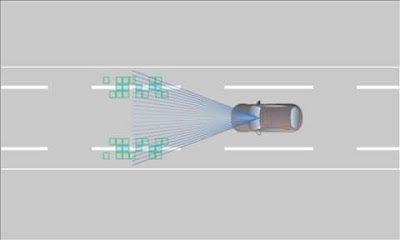
Lane Departure Warning – this technology uses a set of cameras to monitor the white and yellow lines on the road. When the vehicle crosses a line without the turn signal being activated the system informs the driver by sounding an audible alert. This helps keep sleepy or inattentive drivers from veering off from their lane. Other advanced lane departure warning systems can actually attempt to steer the vehicle back into the lane or apply the brakes slightly.
In-car Internet – using cellular technology, vehicles can now become a secure Wi-Fi hotspot providing passengers with web access for laptops, video game devices and other gadgets. An example of In-car Internet service is Chrysler’s uconnect Web which is compatible with 2009 Chrysler, Jeep and Dodge vehicles.
Blind Spot Monitoring – To help prevent accidents due to the driver’s blind spots, a system of cameras and sonar technologies scans the driver’s no-see zone. If another vehicle goes into the driver’s peripheral vision and the steering wheel turns, a warning light or audible alarm alerts the driver to the possible danger.
Round-View Cameras – To make parking in tight spaces easier, this new technology uses cameras strategically located around the vehicle to project rear, front and side views of on a navigations screen.
Night Vision – New automotive night vision systems use thermal imaging cameras to create a moving video image of people, vehicles and objects beyond the reach of the vehicle’s headlights. Other advanced car night vision systems generate information about the depth of the scene in real time, codifying the distance of every object. For instance, warm colors are for closer objects and cold colors for distant objects. Advanced night vision systems in some cars also process real-time movements, indicating the direction in which the object moves in the scene and how everything changes due to the movement of the car. If the system determines a person ahead of the vehicle is at risk, the driver will receive an audible or visual warning.
Via MSN Autos
Top New Car Technologies for 2009 – Part 1

Adaptive Cruise Control – also known as active or intelligent cruise control, ACC uses radar and/or laser sensors usually located behind the grille to determine the speed and distance of the vehicle in front. It maintains the vehicle’s pre-set speed and adjusts it accordingly to maintain the proper distance between vehicles in the same lane. For instance, if the vehicle in front slows down, the system sends a signal to the engine or braking system to decelerate. The system accelerates to the last speeds setting when it detects that the distance is safe again.
Traffic and Weather Alert Navigation – Future drivers will be more informed about weather and traffic conditions with real-time information superimposed on GPS-based navigation systems. The weather/traffic information is scaled and customized for the driver’s location and route. The service provides alerts about severe traffic and weather conditions that can help drivers avoid a massive traffic jam or a storm brewing on the road ahead.

Portable Nav Device Integration – As portable navigation devices become even more popular, automakers are now equipping their vehicles with interfaces and storage compartments for these gadgets.
Yellow Motorcycle by Igarashi Design
This new prototype that has been introduced is quite revolutionary of talks about the overall concept. The aim of the project was to develop a concept wherein the same is controlled by high performance motorcycle robots. With the bikes being driven by high power electric motor with a built in battery pack thus ensuring that the space available is utilized quite optimally. The balance of the vehicle is actively controlled by swinging the boom by the hydraulic actuators. Since the vehicle is driven by motorcycle robot, hence is far more accurate well not bad considering the fact that the promoters aim to break the records in the MotoGP circuit.
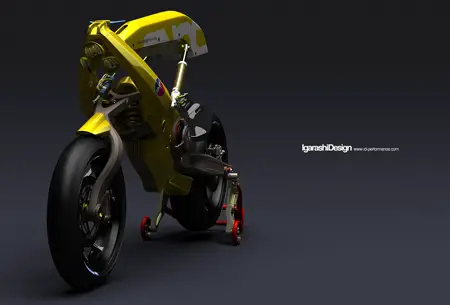
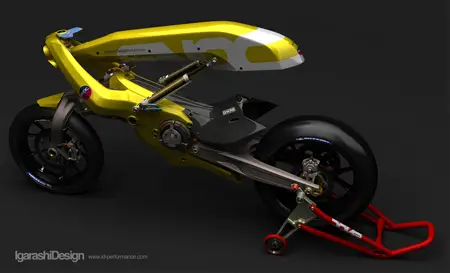
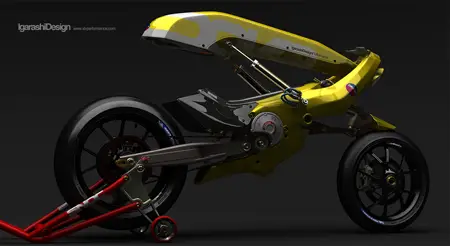
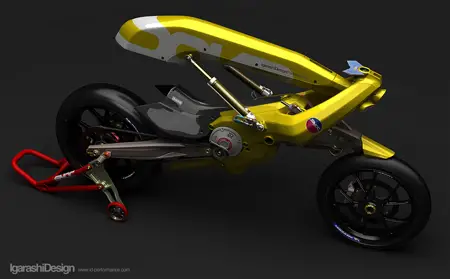
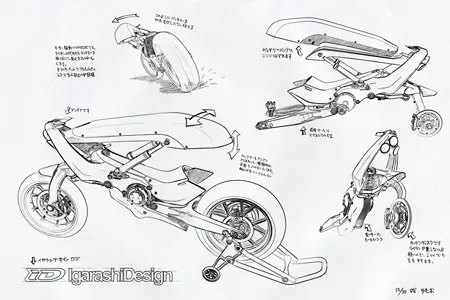
source:http://www.tuvie.com
Wednesday, March 4, 2009
Fone Logs wins Qualitel deal

Fone Logistics has secured a deal with business telecoms specialist Qualitel to be its sole distributor of O2 products.
The distributor won the two-year contract after beating off competition to win exclusive ownership of Qualitel’s entire O2 distribution.
It becomes Fone Logistics’ fourth deal in the last two months. Last month it announced a deal with Vodafone to deliver its fixed line products as well as landing an exclusive contract with Virgin Media to distribute its range of home broadband, telephone and TV bundles. It has also agreed to distribute the new Samsung B2700 handset to the construction market.
Fone Logistics managing director Ian Gillespie said: "We have reached a deal to guarantee Qualitel's O2 business for the next two years in the face of stiff competition, O2 Direct included, and with the requirement to demonstrate an improvement on admitted drops in service levels mid last year.
"Qualitel has been one of our premier partners for the past 18 months and is one of the most successful dealers in the country across a number of networks. We continue to be very pleased to work with them."
B2B dealer Qualitel has a direct relationship with Vodafone and is an Orange Business Partner via Mainline. It also claims to be one of the top 20 B2B independents in the UK.
Qualitel managing director Mike Ridgway said: "Fone Logistics has won this account based upon an imaginative and commercially attractive offer and off the back of a demonstrable improvement in service levels and expertise.
"I am looking forward to a long and mutually beneficial relationship between our two companies and am confident that we have made the right choice in Fone Logistics."


